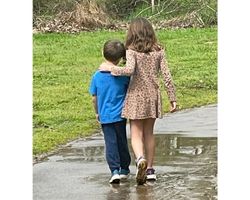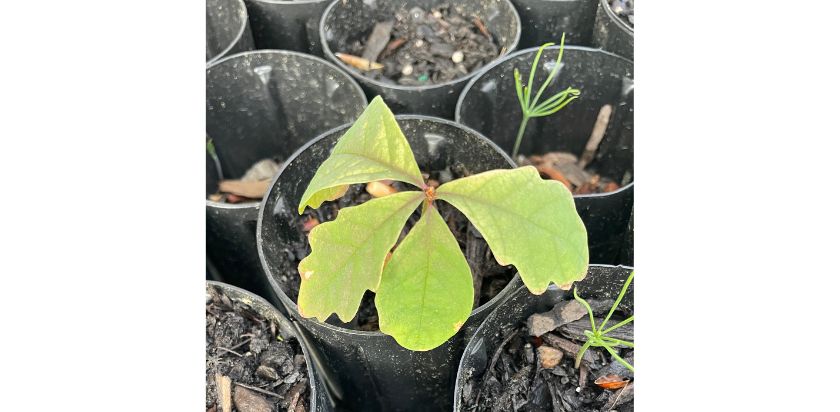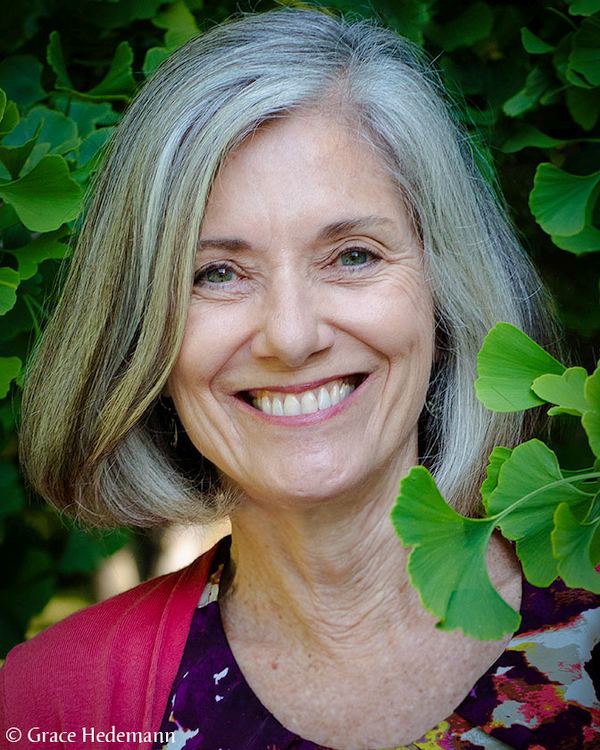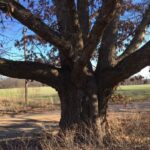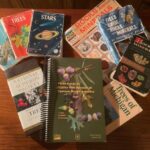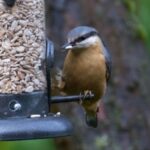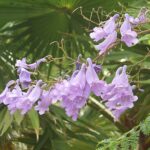I’m currently blogging from North Carolina. I was given the opportunity to spend a week with my two oldest grandchildren while they are on spring break. And their parents and younger brother are not. What adventures we’re having!
Grandparents Day
The day after my husband and I flew in, we attended the Grandparents-and-Friends Day celebrations at both of the two older children’s schools. Both schools are inspired by Quaker values and follow the Reggio Emilia approach to education.
After enjoying refreshments out of doors, we filed into the Meeting House at my grandson Caden’s school, one of the three Carolina Friends Early Schools. First, we all settled in silence together for a few minutes. Regardless of one’s religious beliefs, it is said the simplicity of sitting silently in the presence of others allows time for contemplation and self-reflection.
Then we all sang five songs together. Four of the songs I knew:
- The African-American spiritual “Peace Like a River”
- “Skinnamarink,” a song featured in the 1910 Broadway musical The Echo and repopularized in the 1950s by Jimmy Durante
- “Magic Penny” (a.k.a. “Love is Something”), written in 1949 by Malvina Reynolds
- The gospel song “This Little Light of Mine.”
Standing Like a Tree
But the fifth song I’d never heard of before. “Standing Like a Tree” is a song by Betsy Rose. It is featured on her album In My Two Hands, inspired by the teachings of Vietnamese Zen Master, poet, and peace activist Thich Nhat Hanh.
The song has an ending that circles back to its beginning. And is a chant that works well as a round. For preschoolers, the song can be accompanied by motions:
. . . standing like a tree (Stand up tall and straight.)
— Betsy Rose
With my roots dug down, (Stomp one foot on the ground with the word “dug” and the other foot with “down.”)
My branches wide and open. (Extend arms overhead and stretched out like the crown of a tree.)
Come down the rain, (Wiggle fingers as if they are raindrops.)
Come down the sun, (Hold arms overhead, and by interlacing fingers, make a large circle.)
Come down the fruit to a heart that is open (Bring hands down slowly and cross them over your heart.)
to be [REPEAT] . . .
This song about trees, about life . . . pulsed through me during a windy weekend on the Atlantic Coast and continued today back in Durham, as we walked the trails in the morning and spent a few hours in the children’s section at one of the branches of the Durham County Library in the afternoon.
Here’s a second chance to hear this song for yourself: “Standing Like a Tree“
4 Grandparents + 1 Granddaughter + 2 Building Projects = Fun!
But Friday, there was more. After a tour of Caden’s school rooms, our daughter drove us to the Lower School on Carolina Friends’ main campus to visit Avery Grace’s classroom. There, working together in a group of five–Avery Grace, her Somarelli grandparents, and the two of us–we tackled two construction challenges: building structures with playing cards and creating a rectangular prism with miniature marshmallows and toothpicks. Challenging fun with people we love!
Since the fall, however, Avery has been involved in a different sort of “construction” project, a more magical one–making living things appear where they didn’t exist before . . .
The Acorn-to-Oak-Tree Project
One exciting development since last we visited our Durham family at the beginning of December for Avery Grace’s seventh birthday concerns their Acorn-to-Oak-Tree project. One of their acorns has become an oak sapling!
A Daddy-Daughter Team of Scientists
I interviewed Avery Grace and her dad in the chaotic kitchen of our Atlantic Beach Airbnb after dinner about the project. We were finishing dessert, so the interview was punctuated by the scraping of pie forks on dessert plates and a lot of ambient boy noise as Bumpy (our grandkids’ name for my husband) was working with Tyler, the two-year-old, on his baseball swing in the same room.
My son-in-law, Jason, a scientist, explained how the project came to be, “I was inspired by something at Caden’s school, where there’s a glass bulb attached to a suction cup in the window. And inside the bulb is a little plant. And it’s glass, with a little plant in water, so you can see the plant, but you can also see all the roots. I thought it’d be really fun for the kids to see how roots grow . . . even before you can see the leaves come out.”
Avery Grace added, “We watched a video on Daddy’s phone of how to do it.” Avery Grace knew the acorns she and her two brothers had collected “from all over our porch and the backyard” were white oaks (Quercus alba) and water oaks (Quercus nigra). The water oak, found in all the coastal states from New Jersey to Texas, is an oak I wasn’t familiar with. At first, I thought maybe she meant a swamp white oak, but she knew what she was talking about–the water oak is a part of the red oak group.
The Acorns
In October and November, the kids collected the acorns when they were falling. Then they set them up to germinate atop used plastic bottles with a hole cut in each top. The bottles were set up on the kitchen counter, so the kids could watch the roots develop. Three acorns sprouted. But a subsequent experiment of adding fertilizer to the bottles didn’t go well; it fed the bacteria in the water instead of the acorns. While this was good to know, the coolest thing they learned was that, in the beginning, as the acorn germinates, the new oak develops a taproot.
Eventuallly, from that first singular taproot, several massive roots–known as lateral roots–will eventually replace the taproot altogether. On mature trees, each branch of this critical system can reach out to twice the dripline of the canopy and at a depth of up to 4 feet below ground. These lateral roots will be the primary source of support as the oak tree develops.
“The Root System of Oak Trees: The Essential Guide“
The Star of the Nursery
When we got back from the beach Sunday evening, the kids took me out to see the nursery set up on their back deck. In addition to seedlings of jalapeno and other peppers, and sunflowers, one new oak sapling has risen above the soil on a very thin stalk of about 3.5 inches and is sporting four beautiful leaves. Avery Grace will decide where to plant this first oak sapling when the time comes.
A Bigger Goal
Their plan now has become to use this Acorn-to-Oak-Tree activity as the pilot for a future project for Avery Grace’s classroom.
As bathtime approached, Jason concluded, “I had two goals: To work with Avery on a cool project to teach her about how you can plant things and let them grow and cultivate them and love them . . . whereupon Avery interrupted to be sure her brother was included, “Caden helped do this experiment, too.”
Planting It Forward
Undeterred, Jason continued, “My other goal was to plant something I won’t get to see, you know? . . . That’s why I want to start them now, so we can give somebody else a chance to have a tree. If we figure out a good system for doing this, then we can do it as a class. Maybe one or two of those kids will plant an oak tree. We’ll have these big beautiful [beings] to watch over us.”
Then, Jason turned to Avery Grace and asked her why she wanted to do the acorn project. She responded without any hesitation, “I just like seeing them grow, and I love trees . . .”
. . . standing like a tree
With my roots dug down,
My branches wide and open.
Come down the rain,
Come down the sun,
Come down the fruit to a heart that is open.
